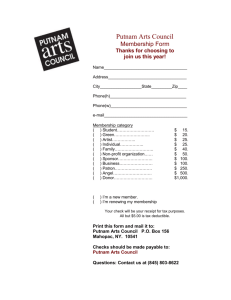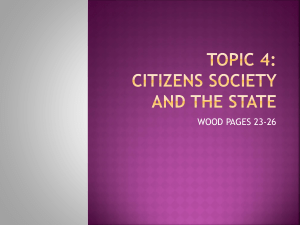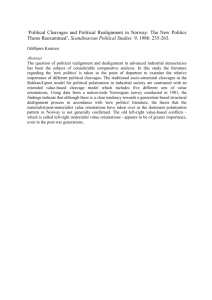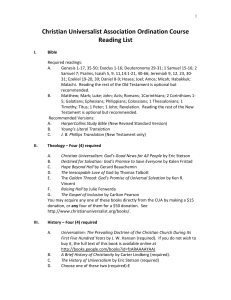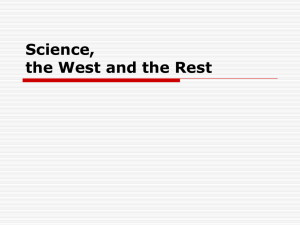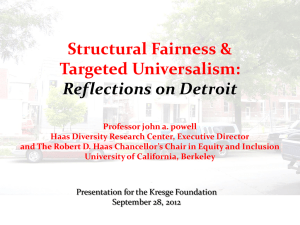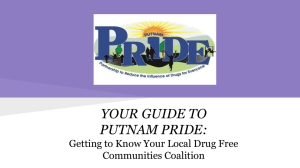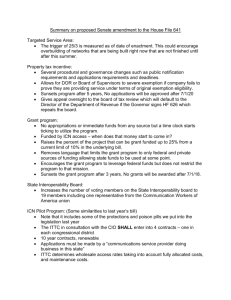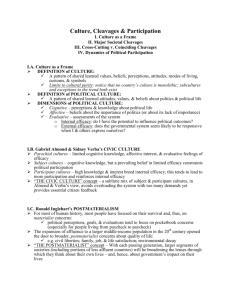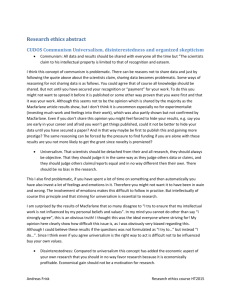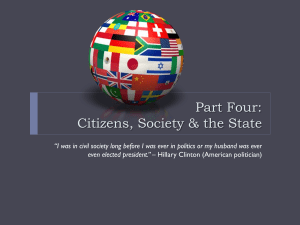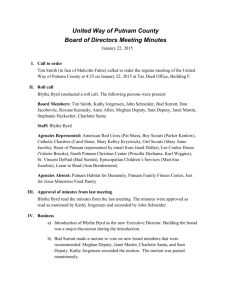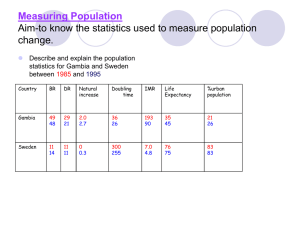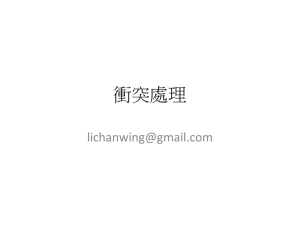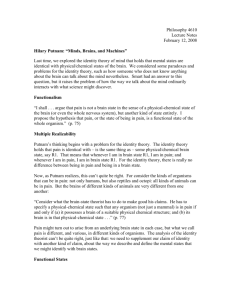PowerPoint presentation - Equity, Inclusion, and Diversity
advertisement
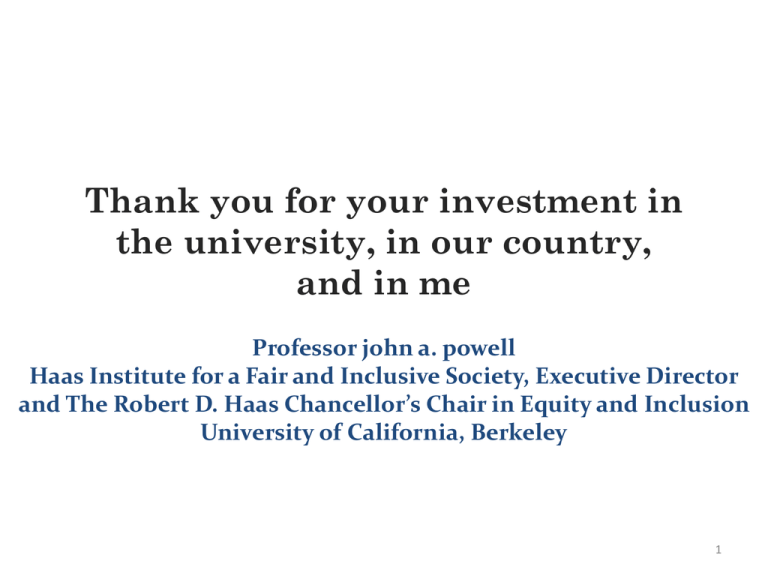
Thank you for your investment in the university, in our country, and in me Professor john a. powell Haas Institute for a Fair and Inclusive Society, Executive Director and The Robert D. Haas Chancellor’s Chair in Equity and Inclusion University of California, Berkeley 1 The Challenges & Opportunities of Diversities Research Clusters Diversity & Democracy Diversity & Health Educational Disparities Economic Disparities LGBTQ Citizenship Disability Religious Diversity 3 The Network Research Relationships UCB & system Wide Government Direct service and organizing Institutions Translation to change frame Non-university based research Communications Sharing input Community 4 Diversity in the United States As a fact, the United States is richly diverse place. 2010 U.S. Census estimates that of the approximately 310 million Americans, there are: – 230 million Whites – 40 million Latino/as – 35 million Black or African American – 16 million Asian Americans – 4 million Native American – 3 million Arab Americans U.S. Census Bureau, 2010 5 Diversity in the United States 2008 population estimates: – 54 million people have a disability – By age: • 5 percent of children 5 to 17 have disabilities • 10 percent of people 18 to 64 have disabilities • 38 percent of adults 65 and older have disabilities 2008 American Community Survey, http://factfinder.census.gov 6 Diversity in the United States Percent and number of adults who identify as LGBTQ http://williamsinstitute.law.ucla.edu/wp-content/uploads/Gates-How-Many-People-LGBTApr-2011.pdf 7 Challenges & Opportunities of Diversity • “One of the most important challenges facing modern societies, and at the same time one of our most significant opportunities, is the increase in ethnic and social heterogeneity in virtually all advanced countries” • “The central challenge for modern, diversifying societies is to create a new, broader sense of ‘we’.” Putnam, R. “E Pluribus Unum: Diversity and Community in the Twenty-first Century— The 2006 Johan Skytte Prize Lecture.” Nordic Political Science Association, 30.2 (2007): 1. 8 Limitations of Diversity • What work does diversity do? • What are its limitations in aiming for fairness, inclusion, and equity 9 Social Cleavages in Our Society 10 Putnam’s Vision of Diversity To develop “bridging social capital” networks” that are both “outward looking and accompany people across diverse social cleavages” Source: Putnam, Robert D., 2000, Bowling Alone: The Collapse and Revival of American Community, Simon & Schuster, New York, NY. 11 Our Vision of Diversity Diversity + Equity Diversity + Inclusion Diversity Where Social Cleavages Disappear 12 Our Approach Power Implicit Bias / Mind Science Structures/ Institutional Arrangements 13 The Context of Opportunity Matters Some people ride the “Up” escalator to reach opportunity Others have to run up the stairs to get to opportunity Targeted Universalism Structural Inequity produces consistently different outcomes for different communities. Targeted Universalism responds with universal goals and targeted solutions VS. Structural Inequity ©2012 Connie Cagampang Heller Targeted Universalism For more information, visit: http://www.iupress.indiana.edu/catalog/806639 16
